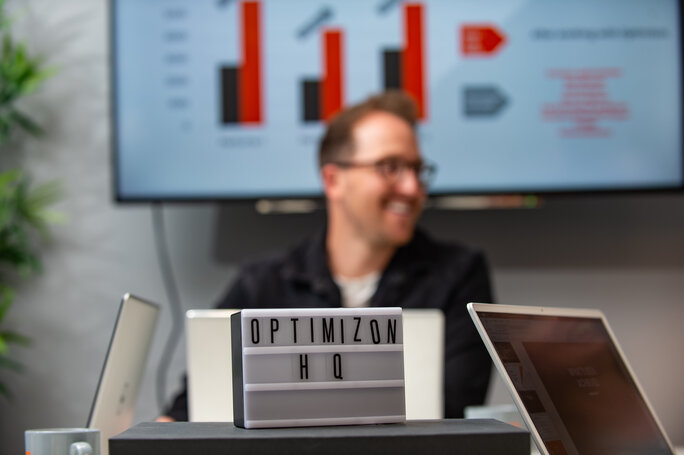In the rapidly evolving world of ecommerce, growth isn’t just about increasing sales, it’s about expanding reach. Global marketplaces offer brands a gateway to untapped audiences, but international expansion is more than just listing products in new territories. At eCom Insights ‘25, Shawn Ma, Head of Business Development at WorldFirst, shared valuable insights into what it really takes to scale globally in today’s competitive landscape.
The Global Opportunity: Why Now?
The barriers to international ecommerce have never been lower. Digital payments, logistics advancements, and AI-driven localisation tools have made it easier than ever for brands to establish a presence in new markets. According to Shawn Ma, brands that aren’t exploring global opportunities risk being left behind.
Marketplaces like Amazon, Alibaba, and MercadoLibre offer immediate access to millions of new customers, and emerging players are rapidly gaining traction in key regions. The shift towards cross-border commerce is no longer a future trend – it’s happening now, and those who act fast will be at the forefront of global ecommerce growth.
Choosing the Right Market: It’s More Than Just Demand
A common pitfall for brands looking to expand globally is assuming that demand in one market will translate directly into another. Shawn Ma emphasised the need for a strategic approach, considering factors such as:
- Regulatory and Tax Considerations – Each country has its own compliance requirements, from VAT and import duties to data protection laws. Navigating these complexities is critical to avoiding costly pitfalls.
- Logistics and Fulfilment – Can your brand efficiently deliver products at a competitive speed? Partnering with global fulfilment networks or local 3PLs (third-party logistics providers) can make or break expansion success.
- Consumer Behaviour & Preferences – What works in the UK won’t necessarily work in Japan or Brazil. Product descriptions, pricing strategies, and even product packaging may need adjusting to fit local preferences.
- Competitive Landscape – Expanding globally means stepping into a new competitive arena. Understanding local competitors, pricing structures, and marketing trends is key to finding a niche.
Localisation is the Key to Trust and Conversions
Expanding into a new country isn’t just about translation, it’s about localisation. Customers expect an experience tailored to their region, from language and currency to preferred payment methods and customer service options.
Shawn Ma pointed out that one of the most significant mistakes brands make when expanding globally is failing to properly localise their offering. AI-driven tools can help streamline translation and customer support, but brands should go beyond basic translation:
- Localised Payment Methods – While credit cards dominate in some markets, others prefer digital wallets or even cash-on-delivery. Brands need to cater to local payment habits.
- Cultural Adaptation – From imagery to product descriptions, what resonates with one audience might not work elsewhere. A marketing message that works in Europe might need reworking for Asian or Latin American markets.
- Customer Service Expectations – In some markets, instant customer service via chat or messaging apps is the norm. Offering region-specific support can enhance trust and conversion rates.
The AI Factor: Smarter Expansion with Technology
Artificial intelligence is playing an increasingly important role in global ecommerce expansion. AI-powered tools can help brands analyse demand, optimise pricing, and even predict the best-performing products for specific regions. Shawn Ma highlighted how AI is enabling businesses to navigate regulatory requirements, detect fraud risks, and automate customer support, making international growth more efficient than ever.
By leveraging AI-driven insights, brands can test markets with minimal investment, reducing the risk of launching into a new region without proper data. With AI handling language translation, competitor analysis, and even advertising optimisation, brands can scale faster while maintaining a level of localisation that would have been cost-prohibitive just a few years ago.
Strategies for a Successful Marketplace Expansion
For brands looking to make a move into new territories, Shawn Ma outlined several key strategies:
- Start with a Marketplace, Then Go Direct – Marketplaces provide instant access to customers and existing infrastructure, making them the ideal starting point for global expansion. However, building a direct-to-consumer (DTC) presence alongside marketplace selling ensures long-term brand control.
- Test Before You Scale – Rather than launching across multiple regions at once, brands should test a single new market with a focused product range before expanding further. This minimises risk and allows for learnings before a full-scale rollout.
- Use Local Experts – Partnering with local agencies, consultants, or distributors can provide crucial on-the-ground knowledge that an AI tool or algorithm can’t fully replace.
- Optimise for Cross-Border Logistics – The right logistics strategy is essential for international success. Whether using fulfilment by Amazon (FBA), cross-border shipping partners, or setting up regional warehouses, ensuring fast and cost-effective delivery is key to winning customer trust.
- Leverage Data for Personalisation – AI-driven insights into customer behaviour can help tailor product offerings, pricing, and marketing strategies for different regions, maximising conversion rates.
The Future of Global Expansion
The ecommerce landscape is evolving rapidly, and international expansion is no longer just an option—it’s a necessity for long-term growth. Brands that embrace a strategic, data-driven approach to global marketplaces will gain a significant competitive edge.
As Shawn Ma made clear, success in global expansion isn’t just about entering new markets—it’s about doing so with precision, cultural awareness, and an eye on emerging trends. The brands that thrive in 2025 and beyond will be those that view international growth not as a challenge, but as their greatest opportunity.
Are you ready to go global? Watch the full keynote speech by Shawn Ma from eCom Insights here.





